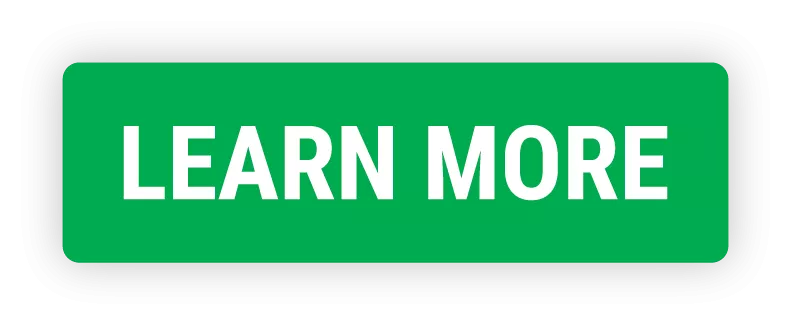Have you ever felt the weight of navigating through a workplace that seems rigid, unresponsive, or even impersonal? Contrast this with an environment where trust, collaboration, and genuine conversations are the norm. That’s the magic of a coaching culture—a transformative approach that is revolutionizing how we work and interact.
KEY TAKEAWAYS
- The Essence of a Coaching Culture: At its core, coaching emphasizes trust, collaboration, and accountability to promote open, growth-oriented conversations.
- Benefits Extend Beyond the Organization: Creating a coaching culture can enhance business outcomes, reduce turnover, and strengthen psychological safety.
- Feedback as a Dual-Growth Tool: Feedback serves as a powerful tool for mutual growth, benefiting both the giver and the receiver.
- Consistency in Application: For success, coaching must be consistently applied across all levels and interactions within the organization.

Defining a Coaching Culture in the Modern Workplace
At its core, a coaching culture embodies trust, accountability, and collaboration. Unlike traditional top-down management systems, where leaders dictate terms, a strong coaching culture promotes a paradigm where leaders act as facilitators. Leaders are more akin to guiding mentors or thinking partners, encouraging open dialogue, fostering individual growth, and cultivating team synergy. The emphasis shifts from focusing solely on results to nurturing personal and professional development, ensuring everyone feels valued and heard.
Allow me to share a personal story that demonstrates the impact of internal coaching in my professional life. Recently, I found myself under new leadership. This leader and I were poles apart in our approaches and personalities.
Over several months, we endeavored to understand each other, but the journey was challenging. It’s no secret that experiencing difficulty with a superior is not unique; many of my peers relayed similar struggles with their bosses—leaders who seemed unaware of their impact, disinterested in the development of their team, and lacked the compassion or intent to build personal relationships with members of their team.
Imagine spending most of your waking hours at work, only to feel invalidated or undermined consistently. The sense that your value to your team is perpetually overlooked can be disheartening. When I shared my frustrations with colleagues, the resonance was palpable. Some confided in their daily tears, while others considered leaving due to their unsupportive bosses. Another colleague hoped for a leadership change in the upcoming months.
Taking the initiative, I approached my leader to address these concerns. While many had done the same, my leader chose to engage in an open dialogue with me—a conversation of vulnerability.
This coaching approach proved to be a turning point. I presented my experiences, framing them as observational data. My feelings, arising from specific situations, led me to certain assumptions or, as some might call them, “learnings.” However, there was a lingering doubt: were my interpretations accurate? For instance, based on particular interactions, I questioned my perceived value within the team. Bringing these concerns forward, I was met with surprising feedback. My leader’s narrative differed starkly from my perceptions, offering a fresh perspective.
Interestingly, of the several such experiences I knew of—three of which involved my friends in similar job settings—only one leader (mine) chose to participate in such a dialogue. This highlights the rarity, yet importance, of open communication in a coaching culture.
A recent survey by my organization, LHH, showed that while 69% of all managers believe it is important for companies to provide coaching and mentoring on leadership skills, only 23% of leaders have received or are receiving coaching or mentoring. – forbes.com
Rather than being confrontational, our interactions were rooted in mutual respect and a genuine quest for understanding. During a particularly vulnerable conversation, where I shared my apprehensions and assumptions, we experienced a breakthrough.

HUMAN SKILL PROGRAMS ARE HITTING LIMITATIONS...
- Close the widening gap between learning and on-the-job application
- Overcome the tension of pausing productivity for development opportunities
- Integrate learning so it is actually in the flow of work
- The evolution of human skill development
- What Automated Coaching™ is and how it works.

The Imperative for Change: What Is The Value Of Coaching?
A coaching mindset seeks to foster trust, accountability, and collaboration. Coaching conversations are not about merely directing. A coaching experience is rooted in creating a space where every member feels valued and validated.
Emotional intelligence and psychological safety have emerged as crucial components in today’s work environment, with the latter becoming the number one indicator of a team’s success. This safety and the intrinsic trust it fosters are pivotal for high-performing teams and creating a sense of belonging in the workplace.
When teams embed a coaching culture, they tend to achieve more tremendous success. Their performance often becomes the benchmark for others in the organization. Shifting the company culture is not about a sweeping organizational change right from the get-go; individual teams can embrace and champion this culture, setting an example for others.
The advantages of this culture extend beyond team dynamics. Coaching in the workplace can catalyze the connection between personal growth and broader business goals when considered on a larger scale.
The result? Enhanced stability and a significant reduction in turnover. In an age where employee engagement and retention are critical, employee coaching becomes even more necessary for supporting professional growth and leadership development.
6 Tangible Benefits Of Coaching for the Organization
- Personal Development: Coaching promotes individual growth, new skill development, and well-being.
- Impact on Business Outcomes: An individual’s progress and successes can intrinsically tie to the organization’s success.
- Foundation of Trust: Trust sits at the heart of culture, creating an environment of mutual respect and understanding.
- Reduction in Turnover: Trust also leads to reduced turnover. Employees feel valued, reducing the need for them to seek opportunities elsewhere.
- Alignment with Goals: Employees willingly align with the company’s goals and create action plans to develop relevant competencies.
- Increased Investment: Deeper investment and involvement from individuals can lead to high performance.
4 Strategies for Successful Implementation Building a Coaching Culture from the Ground Up
Establishing an effective coaching process isn’t instantaneous. It requires targeted strategies, unwavering stakeholder commitment, and proactive participation from everyone on the team.

1. Start Small: Practical Steps for Leaders and Teams
A. Engage Even in Difficult Environments
Leaders can lay the groundwork for change even in challenging organizations where tension is palpable. It may be tempting to assume that change can only come from a complete organizational shift, but small, calculated steps can make all the difference.
B. Harnessing the Power of Individual Teams
A pervasive misconception is that for coaching to be effective, it must start organization-wide. Individual teams can pioneer this culture, serving as examples for the broader organization. Test cultivating this culture at the micro-level to spread it throughout the company organically.
C. Utilize Simple Conversations
Often, the most profound changes start with straightforward, transparent dialogues. In the realm of coaching, it’s crucial to set clear expectations around conversations, ensuring both leaders and team members understand their roles and the goals of each interaction. This regularity in dialogue establishes a cadence, ensuring that feedback and coaching become normal.
2. Practice Two-Way Feedback For Dual Growth
In a coaching culture, feedback isn’t merely a tool; it’s the cornerstone. It provides opportunities for mentoring, clarity, and mutual understanding. But more importantly, it doesn’t just promote the growth of the one receiving the feedback; it’s a two-way street, and both leader and team member evolve together.
If leaders want their managers to take daily accountability for employee engagement, performance and development — to truly give up on bossing and begin real coaching — those managers need to be coached themselves. – gallup.com
A. Use Feedback as a Growth Mechanism
Feedback isn’t just about pointing out areas of improvement; it’s a bridge to understanding, collaboration, and mutual growth. However, embracing feedback isn’t always straightforward. It’s pretty vulnerable and may feel risky, especially when leaders aren’t accustomed to seeking it.
B. Dual Development
A misconception in traditional workplace hierarchies is that leaders coach and direct reports learn. However, this dynamic is turned on its head in a thriving coaching culture. Coaching isn’t a one-way spilling of knowledge or skills; it’s a collaborative journey. It’s a discovery process that two people or a team are doing together.
Feedback, when used effectively, does more than identify gaps; it fosters an environment of continuous improvement, mutual respect, and dual growth.
3. Navigate Challenges and Leverage Differences
Theory without practice is like a ship without a compass. Real-world experiences offer tangible evidence of the challenges and triumphs within a coaching culture.
A. Embracing Differences
Diversity is often celebrated for bringing various perspectives to the table, but it can also bring its fair share of challenges, especially when members have vastly different strengths and talents. However, these differences, when harnessed correctly, can be beneficial.
Consider my own experience; there is still ongoing learning between my leader and me, working through leveraging our different strengths. It’s not about seeing eye-to-eye on everything but appreciating and leveraging those unique qualities.
B. Confronting Challenges Head-On
Transitioning to a coaching culture may unearth hidden conflicts, but it’s also the best tool to navigate them. Don’t forget, when I got a new leader, it was not a seamless start to our relationship. There were misaligned expectations, which you don’t know until there’s some friction.
Introducing a new leader can be a challenge in any organization, especially if there are different perspectives or understandings. However, addressing these issues head-on can lead to resolution and mutual understanding.
C. Open Communication
When issues arise, the path to resolution often lies in dialogue, understanding, and mutual respect. Consider how my leader responded when I brought up my issue; he actually talked with me about what could go better and how we can move forward. This dialogue is essential in fostering understanding and creating a foundation for future collaboration.
It’s in our day-to-day real-life examples that it becomes evident that challenges are inevitable. However, a coaching approach can develop our know-how for navigating complex situations. Teams can thrive with open communication, a willingness to embrace differences, and confronting challenges head-on.
4. Addressing Core Challenges with Cloverleaf’s Automated Coaching
The road to embedding a coaching culture is not always without its hitches. Many teams and leaders grapple with specific pain points:
A. Catalyzing Genuine Behavioral Change:
Often, driving behavioral change can feel like scaling a steep mountain. The aspiration is clear: supporting individuals to become their best selves. Cloverleaf provides the dashboard and insights to navigate this challenge, turning aspirations into actionable coaching.
B. Navigating Impact Measurement:
Quantifying the effects of coaching and team development initiatives can leave people leaders guessing. Without tangible metrics, demonstrating the value of coaching to the broader business becomes nebulous. However, with Cloverleaf, you’re not just armed with data; you’re empowered with insights that resonate, showcasing the impact of your endeavors as pivotal to organizational success.
C. Equipping Managers for Diversity in Teams:
Leaders often find themselves at the helm of diverse teams, each member with unique strengths, motivations, and communication styles. Cloverleaf guides managers in understanding, valuing, and leveraging these diversities. The result? Teams that are not just effective but also harmonious.
With Cloverleaf, you can transform popular validated assessments into Automated Coaching™ for the whole team.
Your organization can:
A. Enhance Strength Awareness:
Cloverleaf’s team dashboard is more than just a digital interface. Members who engage with it experience significant improvements in teamwork quality. The platform fosters an environment where leaders and teammates:
- Recognize and capitalize on each other’s strengths.
- Adapt to evolving challenges and scenarios.
- Cultivate deeper collaboration and synergy.
B. Strengthen Recognition:
Everyone yearns for recognition and acknowledgment. Within just three months of utilizing the Cloverleaf platform:
- Individuals reported a 33% increase in feeling recognized.
- Members sensed a heightened appreciation for their unique skills and inputs, fostering a positive work environment and boosting morale.
C. Promote Psychological Safety:
A team’s success isn’t just about skills but also about how comfortable members feel expressing their opinions and ideas. Cloverleaf plays a pivotal role here by:
- Simplifying the intricacies of understanding varying personalities and behaviors within teams.
- Encouraging open dialogue and mutual respect.
Practical Application in Everyday Scenarios
Creating a culture of coaching doesn’t mean a complete overhaul of your existing workplace culture, hiring external coaches, or setting up formal coaching sessions every week. Instead, it’s about integrating intentional practices into daily interactions, one-on-ones, and workflows.

4 Characteristics Of A Coaching Culture
1. Practice Coaching In The Flow Of Work:
Incorporating coaching into the very fabric of daily work does more than enhance skills—it transforms mindsets. As individuals become more adept and versatile, they invigorate their teams, creating a positive domino effect that can resonate throughout the organization.
2. Foster Trust And Transparency:
A thriving culture is rooted deeply in trust and transparency. Coaching is more than just believing in someone’s expertise; it’s about fostering a shared belief that everyone is collectively working toward the organization’s success. By maintaining open communication channels, embracing feedback, and celebrating each person’s unique strengths, teams build trust and create a resilient bond that elevates results.
3. Move Beyond Transactional Interactions:
In a coaching culture, interactions are more than just transactional. Instead of merely giving instructions or feedback, there’s a focus on understanding, mutual respect, and learning. Every interaction is an opportunity for growth and understanding.
4. Develop Consistency:
For a coaching culture to be successful, it needs to be consistent. It can’t just be a one-off workshop, a once-a-year coach training, or limited to the C-suite. Instead, coaching principles must be embedded in daily interactions, whether it’s a team meeting, a one-on-one catch-up, or even a quick chat by the water cooler.
Final Thoughts
Establishing a coaching culture means moving away from a top-down approach to leadership and towards an environment where every person feels valued, understood, and empowered to contribute their best to the organization. And it all starts with trust. Without trust, the foundation is shaky, but with it, the possibilities for growth and success are limitless.








